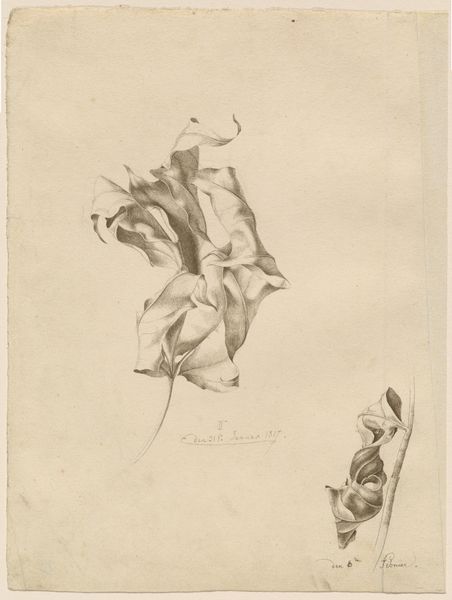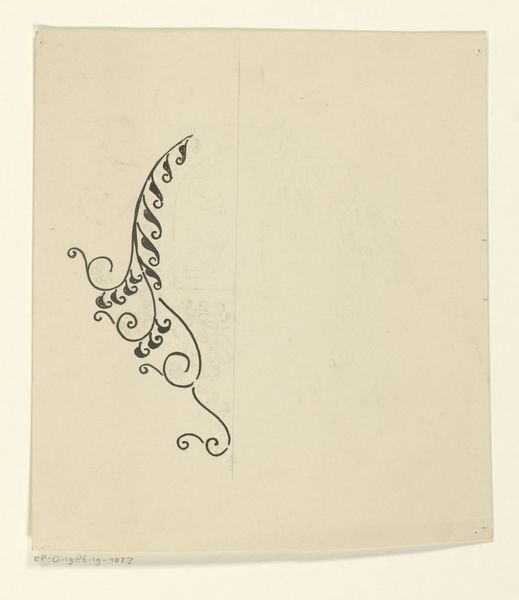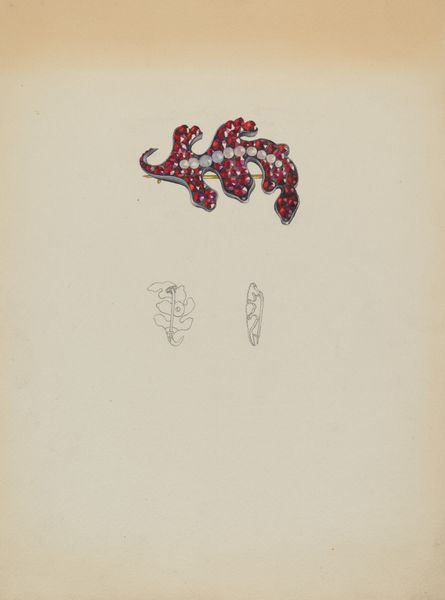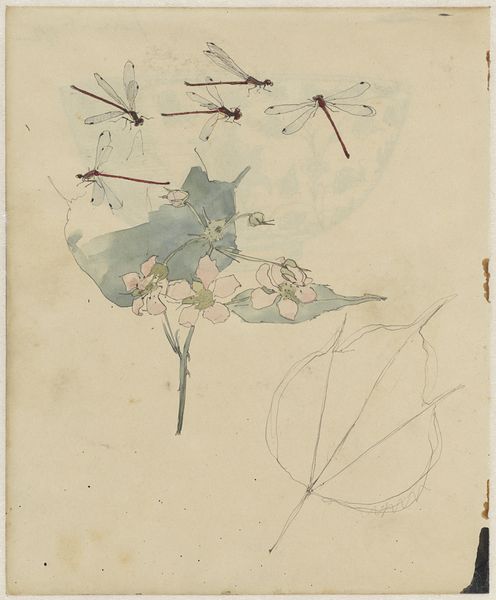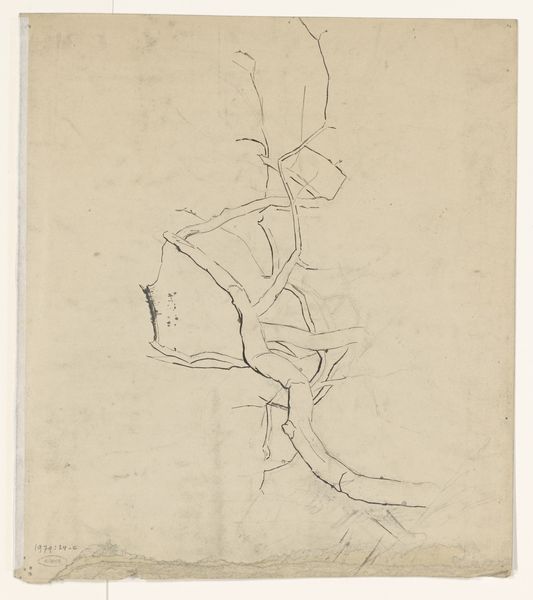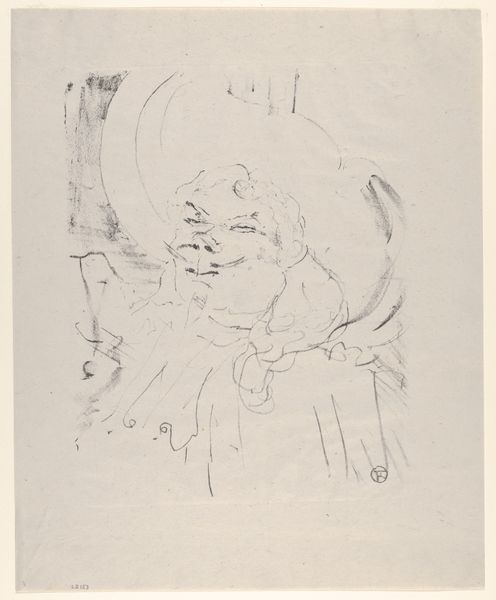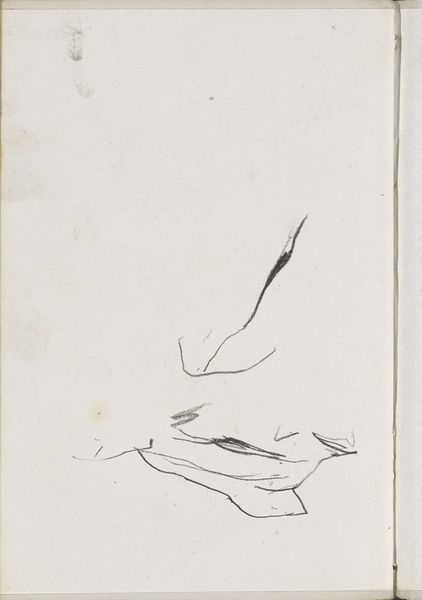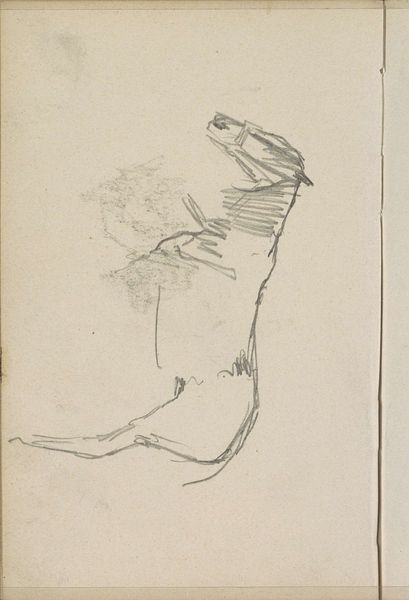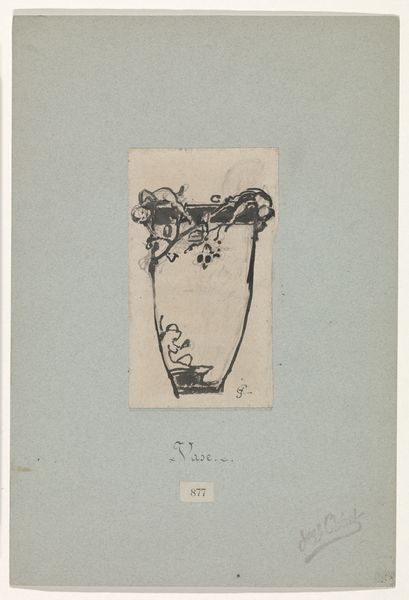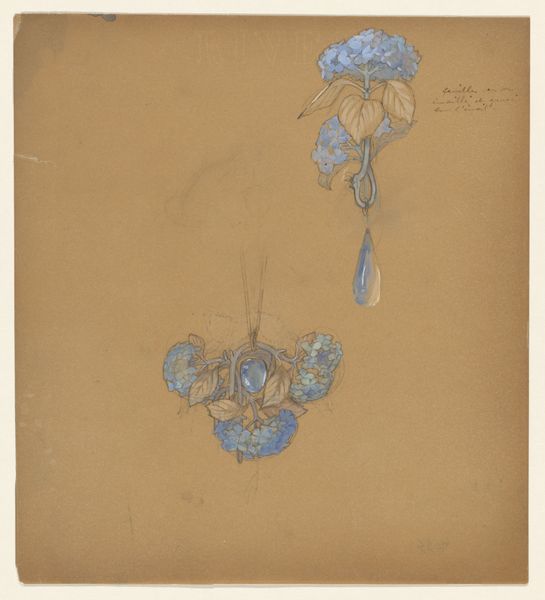
Copyright: Public Domain
Curator: Well, hello there! Look at this strange and vibrant watercolor and drawing on paper from 1932, currently residing in the Städel Museum. The piece is titled "17663 ('Es wackelt die Erde in Griechenland …')" by John Elsas. It roughly translates to "The earth is shaking in Greece…". Editor: Shaking indeed! It feels like a nervous cartoon character melting under a heat lamp. The colors are strangely cheerful despite, or perhaps because of, the unsettling… liquefaction. Curator: Notice the handwritten text below the figure; its almost childlike script adds another layer. Do you sense any particular symbolic significance in that style? Editor: Absolutely! There's an immediate feel of a statement, like that figure with his raised hand in the drawing, trying to grab everyone’s attention. I almost want to label it a psychological artifact. Curator: Expressionism really captures internal emotion through external forms, even when the form itself seems whimsical. It also emphasizes some visual conventions around its subjects and settings through its vibrant figurative symbolism. Does the setting depicted give it the feel of ancient Greece in some sort? Editor: I'd lean away from any ancient imagery. More like interwar unease and disillusionment manifesting in colorful but unsteady imagery. This seems like the opposite of Classical restraint. Curator: I find how Elsas is blending personal turmoil with broader socio-political commentary utterly remarkable. Editor: Yes. You start by noticing a cute drawing of something or someone and quickly realize that you might need to dig deeper to get a clearer picture of the emotional reality going on beneath the art. Curator: It's these subtle contradictions that elevate the drawing for me, transforming what might appear naive into a layered, thought-provoking commentary. Editor: Right! So what starts as bright morphs into poignant! Now I definitely want to see more!
Comments
No comments
Be the first to comment and join the conversation on the ultimate creative platform.


